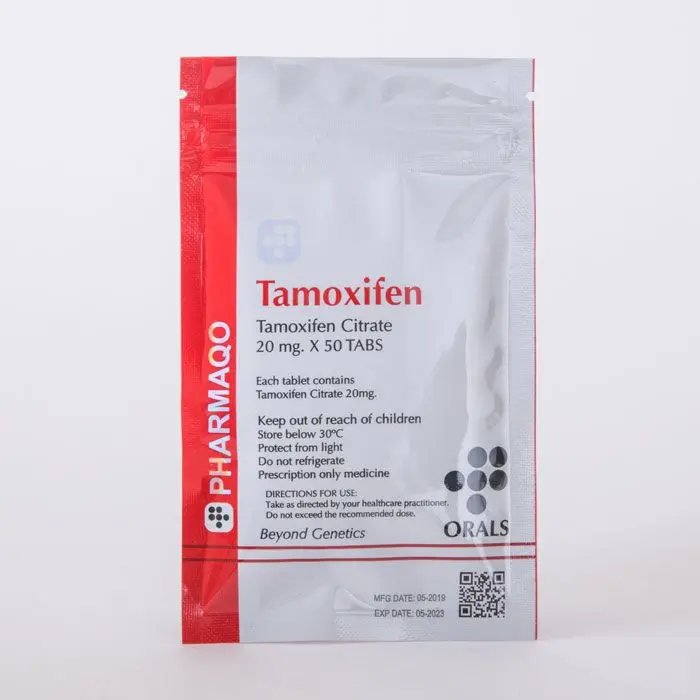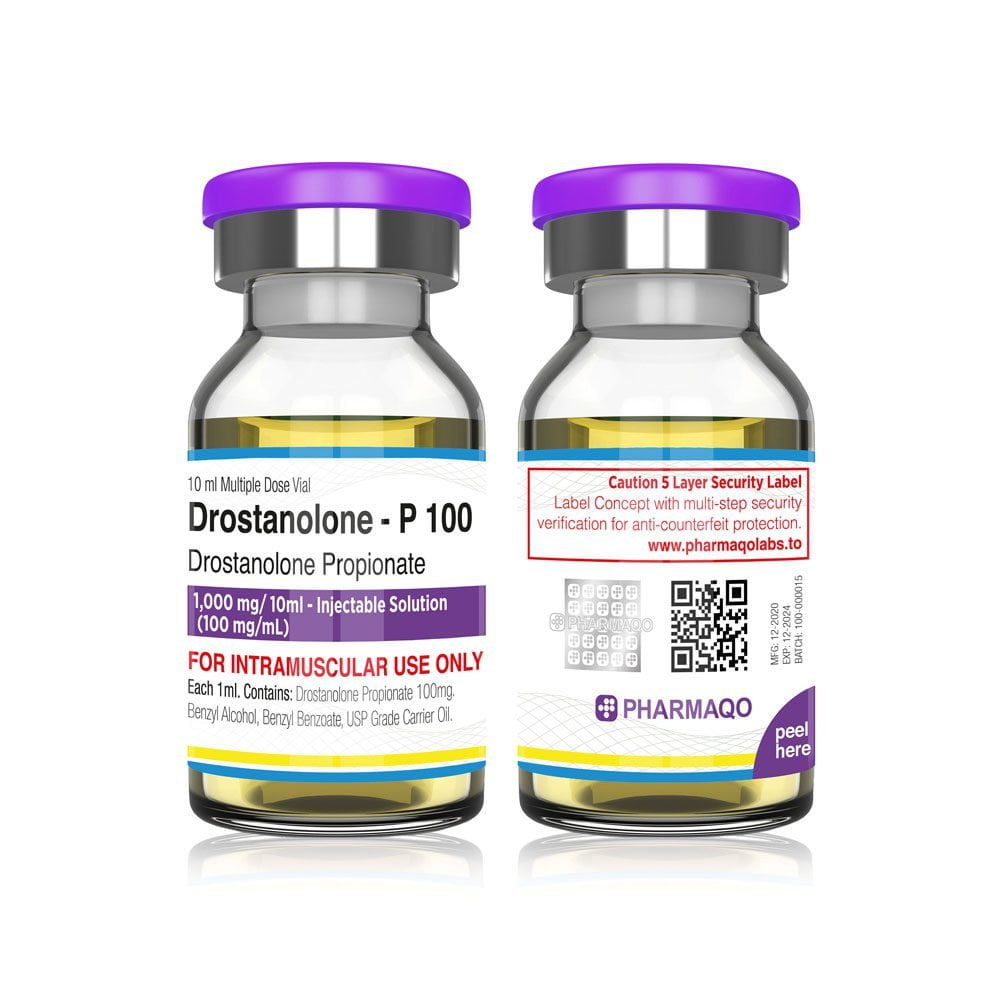

Tamoxifen by Pharmaqo Labs is pharmaceutical-grade Tamoxifen Citrate (Nolvadex), the gold standard selective estrogen receptor modulator (SERM) for post-cycle therapy and on-cycle estrogen management. Each tablet contains precisely dosed Tamoxifen that effectively blocks estrogen at receptor sites while stimulating natural testosterone production. This essential PCT compound has been trusted by bodybuilders for decades to restore hormonal balance, prevent gynecomastia, and maintain gains after anabolic steroid cycles. Its proven track record and excellent safety profile make it indispensable for anyone serious about hormonal health and sustainable results.
All You Need to Know
PCT Dosage (Male): 40mg daily (weeks 1-2), 20mg daily (weeks 3-4)
On-Cycle Dosage: 10-20mg daily as needed
Female Dosage: 10-20mg daily
PCT Duration: 4-6 weeks
LEARN MORE ABOUT THIS PRODUCT HERE
Product Specifications
| PCT Dosage | 20-40mg daily |
|---|---|
| Gyno Prevention | 10-20mg daily |
| Active Half-Life | 5-7 days |
| Detection Time | 3 months |
| Anti-Estrogenic Rating | High (breast tissue) |
| Chemical Name | (Z)-2-[4-(1,2-diphenylbut-1-enyl)phenoxy]-N,N-dimethylethanamine |
| Stack With... | Clomid, HCG, Aromatase Inhibitors |
| Common PCT Protocol | 40/40/20/20mg over 4 weeks |
Best PCT Protocols with Tamoxifen
Tamoxifen forms the backbone of most successful PCT protocols. For moderate cycles, combine with Clomid at 50mg daily for comprehensive HPTA recovery. Following heavy or prolonged cycles, incorporate HCG at 1000-1500iu EOD for 2 weeks before beginning Tamoxifen to jumpstart testicular function. Some users add natural testosterone boosters like D-Aspartic Acid or Tribulus for additional support.
For on-cycle use, Tamoxifen can be combined with Arimidex or Aromasin for complete estrogen management, using the SERM for breast tissue protection while the AI controls overall estrogen levels. Post-cycle, many athletes continue low-dose Tamoxifen (10mg daily) during their cruise phase to maintain optimal estrogen balance. The versatility of Tamoxifen makes it suitable for everything from first-time users to advanced bodybuilders running complex protocols.
PCT Tabs 102.5 | Pharmaqo labs
Arimidex | Pharmaqo Labs
Clomid | Pharmaqo labs
HCG 5000 | Pharmaqo Labs
RAPID TESTOSTERONE RECOVERY
Tamoxifen excels at stimulating the hypothalamic-pituitary-testicular axis (HPTA) to restore natural testosterone production after suppressive cycles. By blocking estrogen's negative feedback at the hypothalamus and pituitary, it triggers increased LH and FSH release, which signals the testes to produce testosterone. Users typically see testosterone levels begin recovering within 2-3 weeks, with full restoration possible within 6-8 weeks depending on cycle severity. This rapid recovery helps maintain muscle mass and prevent post-cycle crashes.
GYNECOMASTIA PREVENTION AND REVERSAL
The selective action of Tamoxifen makes it uniquely effective at preventing and even reversing early-stage gynecomastia. It binds strongly to estrogen receptors in breast tissue, blocking estrogen's effects without eliminating the hormone entirely. Many users report reduction in puffy nipples and breast sensitivity within days of starting treatment. For existing gyno, higher doses (40-60mg) over several months can significantly reduce tissue growth, though complete reversal of established cases may require surgery.
IMPROVED LIPID PROFILES
Unlike aromatase inhibitors that can negatively impact cholesterol, Tamoxifen actually improves lipid profiles in most users. It acts as an estrogen agonist in the liver, promoting beneficial effects on HDL (good) cholesterol while reducing LDL (bad) cholesterol. This makes it particularly valuable during PCT when the body is recovering from the lipid stress of anabolic cycles. Regular use can help restore cardiovascular health markers more quickly than natural recovery alone.
MAINTAINED MUSCLE MASS
During PCT, the body enters a catabolic state as hormone levels crash. Tamoxifen helps preserve hard-earned muscle by maintaining a more favorable hormonal environment during this vulnerable period. By supporting testosterone recovery and controlling estrogen, it reduces muscle loss and strength decline typically experienced post-cycle. Users report keeping significantly more of their cycle gains when using proper Tamoxifen PCT protocols compared to no PCT or inadequate recovery methods.
ENHANCED MOOD AND LIBIDO
The restoration of proper testosterone-to-estrogen ratios through Tamoxifen use significantly improves mood and sexual function during PCT. Users report reduced depression, better energy levels, and restored libido compared to crashing without PCT. The compound's ability to maintain some estrogenic activity (unlike complete suppression with AIs) helps preserve cognitive function and emotional well-being during the recovery phase. This psychological benefit is crucial for maintaining training motivation during PCT.
Potential Side Effects
While generally well-tolerated, Tamoxifen can cause side effects in some users. The most common include hot flashes, mood swings, and headaches, particularly during the first week of use. Some individuals experience temporary vision changes or floaters, which typically resolve upon discontinuation. Gastrointestinal issues like nausea or stomach upset may occur, especially at higher doses.
In rare cases, Tamoxifen can cause blood clots or deep vein thrombosis, particularly in those with pre-existing conditions or who smoke. Some users report reduced libido or erectile quality, though this is often due to overall low hormone levels during PCT rather than the drug itself. Women may experience irregular menstrual cycles or vaginal discharge. Long-term use at high doses has been associated with increased risk of uterine cancer in females, though this is not a concern for typical PCT durations. Joint pain or stiffness may occur as estrogen levels are modulated.
🚚 Fast, Reliable Shipping from Multiple Warehouses
We ship your orders quickly and securely from specialized warehouses around the world. Below you’ll find everything you need to know about our shipping options, delivery times, and costs.
📦 Shipping Options & Costs
| Warehouse | Brands Included | Region | Shipping Cost | Delivery Time | Tracking Provided |
|---|---|---|---|---|---|
| 🇺🇸 USA Domestic #1 | Pharmaqo Labs only | USA | $35 | 5–10 working days | Yes (via email) |
| 🇺🇸 USA Domestic #2 | Beligas Pharmaceuticals only | USA | $15 | 5–10 working days | Yes (via email) |
| 🇪🇺 EU Warehouse #1 | Proper Labs, PharmaQo Labs, HT-Pharma | EU | $25 | 7–12 working days | Yes (via email) |
| 🇪🇺 EU Warehouse #2 | Beligas Pharmaceuticals only | EU | $15 | 7–12 working days | Yes (via email) |
| 🇨🇦 CA Warehouse #1 | Beligas Pharmaceuticals only | Canada | $25 | 5–10 working days | Yes (via email) |
🎉 Free Shipping
All orders over $500 qualify for FREE shipping—no matter which warehouse you choose.
📝 Important Shipping Information
Order Processing: Orders are processed within 48 hours (Monday–Friday).
Discreet & Safe Packaging: All orders are shipped in discreet, secure packaging to ensure your privacy and safety.
Tracking: You will receive a tracking number via email as soon as your order is dispatched (typically within 3–5 days).
Combining Warehouses: You can combine products from multiple warehouses in a single order. When combining items from different warehouses, shipping costs are added together.
Delivery Times: All delivery times are given in working days (Monday to Friday, excluding holidays).
🔄 Returns & Lost Packages
Returns: Returns are possible within 14 days of delivery. Please contact us before returning any items.
Lost Packages: We will reship or refund your order only if the package is lost by the courier or seized by customs. Customer mistakes (such as providing an incorrect address) are not covered.
If you have any questions about shipping or need help choosing the best warehouse for your location, our customer support team is here to help!
Thank you for choosing us! Your satisfaction and privacy are our top priorities.














